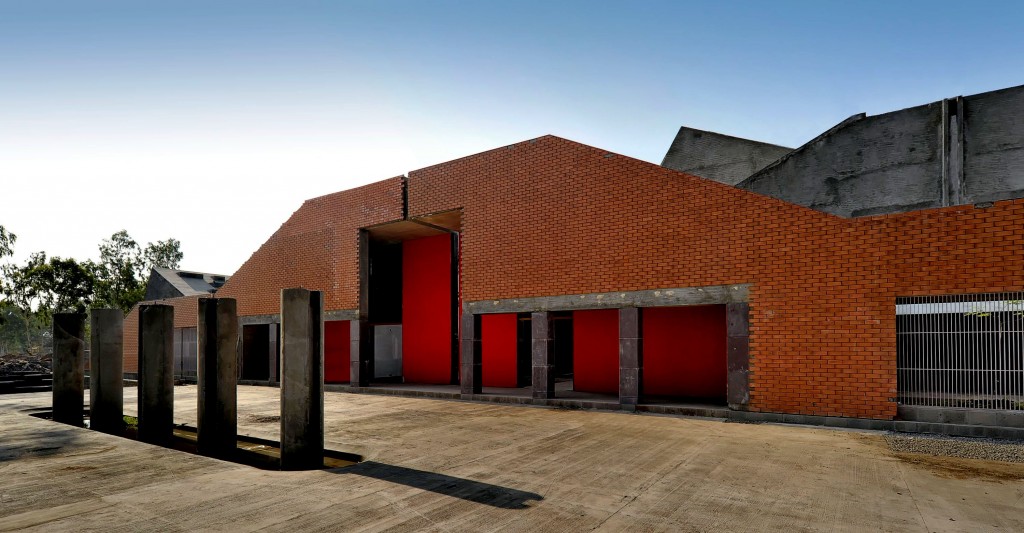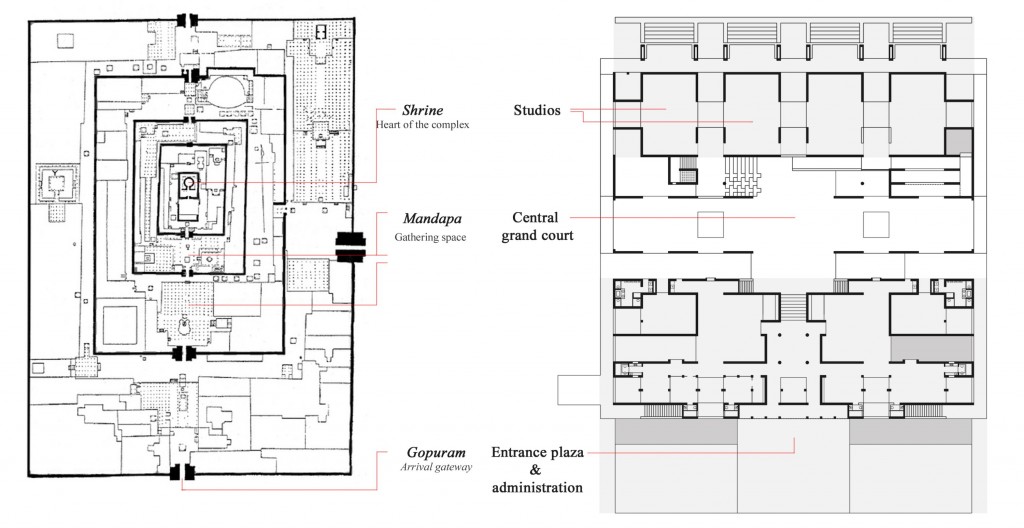Architects: Girish Doshi, Navkaar Architects
Text: Ubez Shaikh
Photographs: Hemant Patil

Located in the suburban region of Pune, this school of architecture is a model for the pupils to peek into the myriad world of architecture. For a student who spends nearly one-third of the day in the institution over a period of five years, the design of the institution itself is bound to make an impact on his/her mind. The School of Architecture is part of a 9-acre integrated design campus that will later house other schools of design as well, to foster inter-disciplinary design thoughts and processes.
Interaction is and has been the foremost concern of the design which is well reflected in the planning. In fact, the whole structure and layout have been used for this core purpose.

It draws inspiration from the South Indian temples, therefore elements like the layering of spaces, symmetry in planning and axial circulation form the essence of the campus plan. The design also draws its concepts from the vernacular architecture of old Pune city, in making a contemporary interpretation of the courtyard Wada typology. It is reminiscent of traditional city streets with their human scale and multipurpose use. The series of courtyards connecting the studios, the overlooking corridors, the play of linear and the dramatic angular, along with the honest use of materials of bricks, glass and concrete, offer visual imagery of the place which enhances the experience of the users.

The College of Architecture promotes modern ideas without losing faith in vernacular concepts of Indian placemaking. The library plays a pivotal role in the complex, as it is foreseen as a hotbed of acquired knowledge and research. Physically, the access here is flexible irrespective of whether or not the administration is open, while modern smart card technologies ensure their security.

An informal discussion in the extended studio in courtyards, a jury panel exhibition put up in the court, bumping into a fresh piece of work displayed along the passage – these are all proof that together with these elements, it merely doesn’t become an exercise in nostalgia but it takes ‘design interaction’ to the next level. It is like a walk through a live book where communication and chance encounters are not forced, but more casual and incidental. It is an effective way to share work and thoughts, to blur the boundaries between the juniors, seniors and faculty.
At the end of all things, it is an honest effort in place-making.
For more details and facts please visit THIS LINK.







